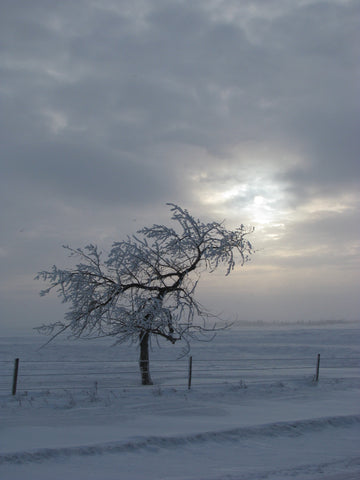
Discover your Canadian Hardiness Zone
Discover your Hardiness Zone
Understanding Hardiness Zones: A Guide for Prairie Growers
Understanding your hardiness zone is crucial when choosing plants and trees that will thrive in your local environment.
What is a Hardiness Zone?
Hardiness zones are a system used to categorize regions based on their average minimum winter temperatures. They help gardeners and growers determine which plants can withstand the winter conditions in their area. Zones are numbered, with lower numbers indicating colder climates.
USDA vs. Canadian Hardiness Zones
You may have come across both USDA and Canadian hardiness zones. While the USDA zones are based solely on minimum winter temperatures, the Canadian system is more comprehensive. It considers additional factors such as summer temperatures, frost-free days, precipitation, snow cover, and wind patterns. As a result, the Canadian zones often provide a more nuanced picture of growing conditions, especially for northern regions. We use the Canadian hardiness zoning.
For example, a location in USDA zone 3 may correspond to a slightly different rating in the Canadian system due to these additional factors. Knowing which system your reference map uses can help you make more informed decisions.
Why is Knowing Your Zone Important?
Choosing plants suited to your hardiness zone increases the likelihood of success in your garden or orchard. Plants that are not hardy to your zone may struggle to survive winter or may not grow vigorously, resulting in poor yields or even failure. By selecting trees and shrubs adapted to your zone, you’re setting your plants up for a strong start and long-term health.
Determining Your Hardiness Zone
We are located in hardiness zone 3, and all our fruit trees have been grafted and grown here, surviving one or more prairie winters. If you’re unsure of your zone, you can find interactive maps online to determine it based on your postal code or address.
Beyond the Zones: Microclimates and Changing Conditions
Hardiness zones provide a helpful baseline, but they’re not the whole story. Microclimates, small areas where local conditions differ from the surrounding region, can influence plant growth. For example, a sheltered yard, a southern slope, or proximity to a body of water can create a warmer microclimate, effectively shifting a zone 3 area closer to zone 4. Conversely, exposed areas or frost pockets may lower it to zone 2.
How We Help
At our nursery, we do our best to accurately rate the hardiness of our trees. Every tree we sell includes a hardiness description on its product page to help you make an informed choice. All our trees are grown and tested here on the prairies, ensuring they are as tough as the land they’re destined for.
By understanding your hardiness zone and considering local factors, you can choose trees and plants that will flourish in your unique environment. Ready to start planning? Click the links below to determine your zone and explore our hardy selections. Let’s grow something amazing together!
Canada's Plant Hardiness Zones
Canada's Extreme Minimum Temperature Zones
Find your Canadian Town of City

A prairie hardy plum tree in winter
